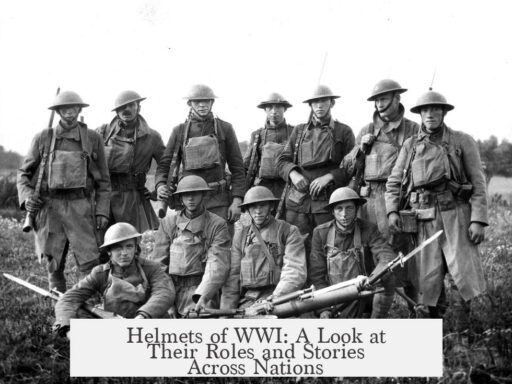The origins of the classic “Please Stand By” image trace back to the early days of television broadcasting when stations did not operate 24/7. This image, often overlaid on test patterns like the Indian-Head Test Pattern, served as a signal during downtime, technical difficulties, or between programming slots, indicating viewers should wait for the broadcast to resume.

Television stations in the mid-20th century often broadcast only during designated hours, typically in the evening. When not broadcasting content, they displayed test patterns to show that the channel was still active. The “Please Stand By” message was prominently featured to inform viewers that programming would return shortly. This practice arose from technical limitations and the need to handle broadcast interruptions gracefully.
The background of this image is closely tied to test patterns, which were diagnostic tools. The most famous early example is the Indian-Head Test Pattern. This black-and-white pattern, used from just after World War II into the 1970s, allowed engineers and viewers to calibrate their televisions. Older TV sets required manual adjustment of vertical and horizontal synchronization. The test pattern helped identify visual distortions, ghosting, or poor antenna reception, making it easier to ensure optimal picture quality.

The Indian-Head Test Pattern earned its name from the central illustration of a Native American chief’s head. Despite the pattern’s widespread use, the choice of this image remains unclear. Some historians and broadcasting experts suggest it was selected because it met specific technical criteria set by companies like RCA, which published guidelines for the color and grayscale content needed for test screens. It is likely a graphic artist working within those guidelines chose the image for practicality rather than symbolic reasons.
Over time, television moved to color broadcasts, and stations updated the test patterns accordingly. Beginning in the early 1970s, the Indian-Head pattern transitioned out in favor of color bars test patterns, which better suited the new technology. The “Please Stand By” message sometimes appeared overlaying these newer patterns.

With the rise of 24-hour broadcasting, the use of static test patterns declined. By the late 20th century, most television networks operated continuously, removing the need to signal off-air periods or scheduled interruptions. Instead, networks often use branded splash screens or more modern standby images if technical difficulties occur. Nevertheless, the phrase “Please Stand By” endures in popular culture as a symbol of broadcast interruptions or suspense.
The “Please Stand By” image carries nostalgic weight. Many people remember falling asleep in front of their televisions only to awaken to the test pattern screen, often accompanied by a steady test tone. This auditory-visual combination has become iconic in television history and remains a cultural touchstone when referencing broadcast technology’s early era.

| Key Aspect | Details |
|---|---|
| Test Pattern Purpose | Displayed during off-air hours to confirm channel functionality and assist TV adjustments. |
| Indian-Head Test Pattern | Used post-WWII to 1970s; black-and-white image aiding calibration. |
| “Please Stand By” Message | Shown during technical difficulties, between programs, or off-air periods. |
| Technology Evolution | Replaced by color bars in the 70s; 24/7 broadcasts ended need for test patterns. |
| Cultural Impact | Symbolizes early TV era; evokes nostalgia related to broadcast interruptions. |
The classic “Please Stand By” image originated as a practical broadcast tool during the early days of TV. It helped signal downtime and technical issues while offering viewers a clear message. Rooted in the Indian-Head Test Pattern tradition, its use declined with newer technology and round-the-clock broadcasting. Today it remains a powerful symbol of television’s formative years.
What Are the Origins of the Classic “Please Stand By” Image?
The classic “Please Stand By” image traces back to an era when television was still figuring itself out. It originally emerged from the Indian-head test pattern, a black-and-white test image used predominantly from post-WWII through the 1970s. This image, combined with the “Please Stand By” message, served various practical purposes — from signaling broadcast downtime to helping viewers fine-tune their TV sets.
Let’s dive deeper into this iconic snapshot of broadcast history and explore why it became a symbol so ingrained in our cultural fabric.
The Test Pattern Background: A Vintage TV Lifeline
Long before Netflix marathons and streaming marathons, TV stations didn’t run 24/7. Back then, they broadcasted only during specific hours, usually in the evenings. The rest of the time? Dead air — crickets chirping, or rather, static and silence. Here’s where the test pattern comes in.
The test pattern was a nifty visual tool used to confirm that the channel was alive and well, even when no programs were being shown. Think of it like a “heartbeat monitor” for your TV station.
But it wasn’t just a fallback visual. Early televisions had knobs that let viewers manually adjust vertical and horizontal beam synchronization. If the image was shaky, stretched, or oddly shaped, moving the antenna or tweaking these dials helped fix it. The carefully designed pattern made signal distortions, ghosting effects, or echoes more visible and easier to pinpoint.
The Indian-Head Test Pattern: The Heart of “Please Stand By”
From the late 1940s to the 1970s, the Indian-head test pattern became a widely recognized symbol of these test visuals. It was a black-and-white photo of a Native American chief framed alongside technical markings and geometric shapes. This pattern was not just art; brands and broadcasters used it worldwide as a reliable calibration and diagnostic tool.
If you grew up in a household with a TV during that era, you probably saw the Indian-head test pattern more times than you care to remember — usually accompanied by a piercing audio test tone.
Guess what replaced it? The introduction of color television in the early 1970s brought about the famous “color bars” test pattern, which many of us associate with TV technical difficulties today. Occasionally, the “Please Stand By” message was overlaid on these patterns to signal either technical interruptions or broadcasting pauses.
Why “Please Stand By”? The Broadcast Pause…
Now, let’s address the question that might be popping up: Why the *please stand by* message? It was the polite way broadcasters told viewers, “Hey, we’re having a technical hiccup or between shows. Please hold tight.” No fancy buffering wheels or progress bars back then.
- During off-hours when the station wasn’t transmitting programs (remember, no 24/7 back then), the test pattern with “Please Stand By” reassured viewers the station was still operational.
- Before broadcast switching became seamless, networks displayed this during transitions between programs.
- And if there was an unexpected interruption or technical failure, this image popped up as the default safety net.
Imagine you’re excitedly watching a mystery show, and suddenly—boom!—technical issues hit, and this image appears. Rather than blank silence, you got this calmly decorative, even hypnotic, screen signaling, “Don’t panic—just wait a bit.”
Why an Indian Head? Mystery Meets Technical Necessity
The reason for the Native American figure on the test pattern remains a bit of a broadcasting mystery. Several seasoned historians and experts admit they have no definitive explanation. RCA, a pioneer in early broadcast technology, had stringent guidelines about the grayscale content that the pattern had to include for calibration purposes.
The best guess? A graphic artist might have chosen a photo of an Indian chief because it met the necessary technical specifications in terms of shading and contrast. The exact cultural reasoning, if any, has been lost to time—but the image stuck around and became iconic.
From Then to Now: Evolution and Nostalgia
Throughout the 1970s and beyond, test patterns evolved. The Indian-head gave way to vibrant color bars, and eventually, 24/7 broadcasting became the norm. Modern networks now have sophisticated tech that rarely requires a test pattern for troubleshooting or calibration.
Instead of those old images, viewers today might see branded splash screens during maintenance or unexpected outages. But the symbolism of the “Please Stand By” test pattern lives on in pop culture. It evokes nostalgia for an era when TV was simpler, slower-paced, and when a crisp static pattern and a steady tone were part of your daily routine.
Many who grew up in that era recall the odd habit of falling asleep in front of the TV only to wake up to the glowing test pattern and that eerie continuous tone. It’s a sensory memory, a quirky soundbite of the past that connects generations.
Why Should You Care About This Broadcast Relic?
Understanding the origins of the “Please Stand By” screen fills a gap in media literacy many take for granted. In an age of instant streaming, buffering bars, and error codes, that test pattern reminds us how far technology has come and the sometimes odd, quirky steps along the way.
For content creators and media geeks, the image also holds a valuable lesson: sometimes, simplicity is the best communication tool. A clear, calm visual combined with straightforward text reassured viewers in uncertain moments—something broadcasters aim to do even today with digital alerts.
Still Seeing It Today?
While modern TV rarely uses these test patterns for technical checks, the “Please Stand By” image occasionally reappears in pop culture. It’s often used humorously in shows, movies, or livestreams as a retro nod to technical glitches or downtime. It works because it’s so instantly recognizable and loaded with cultural weight.
The classic image reminds us that at one time, broadcasting was a craft—a dance of technology, art, and human timing—and not just the seamless digital feed we binge on today.
Wrapping Up
- The “Please Stand By” image originated from the Indian-head test pattern used after WWII until the 1970s.
- It helped viewers adjust their TVs and indicated when stations were off the air or experiencing technical problems.
- The Indian-head test pattern was phased out with color television’s rise, replaced by color bars and modern digital cues.
- The exact reason behind the Indian icon’s inclusion remains unclear, likely the product of technical necessity and a convenient image choice.
- Its nostalgic and cultural value keeps it alive far beyond its technical utility.
Next time you spot a “Please Stand By” image in a retro film or a tech glitch tribute, you’ll know it’s much more than filler—it’s a relic from broadcasting’s early days. Isn’t it fascinating how one static image carries decades of technological history and cultural memory?
What was the original purpose of the classic “Please Stand By” test pattern?
The test pattern confirmed the TV channel was working properly. It helped viewers adjust their sets for vertical and horizontal synchronization and detect signal problems like ghosting or distortion.
Where does the Indian-Head test pattern come from?
It dates back to post-World War II through the 1970s. It was a black-and-white test image used worldwide before color test bars became common in the 1970s.
Why was the “Please Stand By” message displayed on test patterns?
The message appeared during off-air hours when broadcasts were inactive or between shows. It might also show if the network feed was interrupted unexpectedly.
Why is there an Indian head on the test pattern?
The exact reason is unclear. RCA guidelines dictated technical criteria for the image, and a graphic of an Indian head likely met these, so it was used.
How has the use of the “Please Stand By” image changed over time?
Since the 1970s, color test patterns replaced the Indian-head image. Modern networks broadcast 24/7 and now use branded splash screens instead of traditional test patterns.




